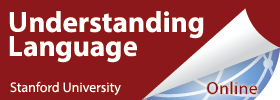Word Lists
These are the lists of words that we have used. We really welcome feedback and comments, and we will keep editing our lists and adding new ones, so let us know what you think. And send us ideas for other lists to include! [email protected]
Stop Words
These are high frequency function words (such as the, and, of) that are critical but distinguishable from content words. These words are not displayed in the Tag Cloud.
Common to Rare words
Although there are many word frequency lists and almost any would be sufficient for our purposes, we have chosen the list from Project Gutenberg to show support for the project. Word frequency is a good proxy for expected difficulty of the word.
Academic Word List (AWL)
The Academic Word List was created by Averil Coxhead at the School of Linguistics and Applied Language Studies at Victoria University of Wellington, New Zealand. The list contains 570 words which appear with high frequency in academic textbooks across a range of disciplines, and therefore are not discipline-specific words. The AWL does not contain words that are in the most common 2000 words of English. The AWL was created so that this word list could be used by teachers as part of a program preparing students for university level study or used by students working alone to learn the words most needed to study at universities. For additional information about AWL, see Coxhead, Averil (2000). A New Academic Word List. TESOL Quarterly, 34(2): 213-238 and Wikipedia.
General Service List (GSL)
The General Service List was developed by Michael West in the 1950’s to represent the 2,000 most common words appearing in the English language. The list has gone through some refinements over the years, but it is generally quite stable, and useful for teachers of English as a second language. Visit Wikipedia for more information.
New General Service List (NGSL)
The New General Service List (NGSL) is a list of approximately 2800 core vocabulary words published by Dr. Charles Browne, Dr. Brent Culligan and Joseph Phillips in March 2013.
The words in the NGSL represent the most important high frequency words of the English language for second language learners of English and the list is a major update of Michael West’s 1953 GSL. Although there are more than 600,000 word families in the English language, the 2800 words in the NGSL give more than 90% coverage for learners when trying to read most general texts of English. Visit Wikipedia for more information.
Language Arts, Math, Science and Social Studies Words
These words include those identified in Robert Marzano’s important work (Marzano, 2004), but his list contains many compound words (e.g., nuclear reaction) which do not work well in the WordSift context, since WordSift operates at the individual word level. So, with apologies, we chopped up those compounds into individual words. We then also had several teachers with content specialization go through the list to delete and add items, consulting their own glossaries and wealth of teaching experience. In spite of these transformations, teachers using the Marzano materials should be able to make use of WordSift to aid in their work.
Word Generation
Word Generation (http://wordgeneration.org/) is a middle school academic language program developed under the direction of Harvard University Professor Catherine Snow, one of the nation’s most prominent experts in literacy. The program originated at the SERP-Boston field site in collaboration with teachers and administrators in the Boston Public Schools. It is geared toward all students, in all subject areas, and can be used in all three middle grades simultaneously. WordSift features the list of words used in the Word Generation program, separately for each of the 3 series of the program.
